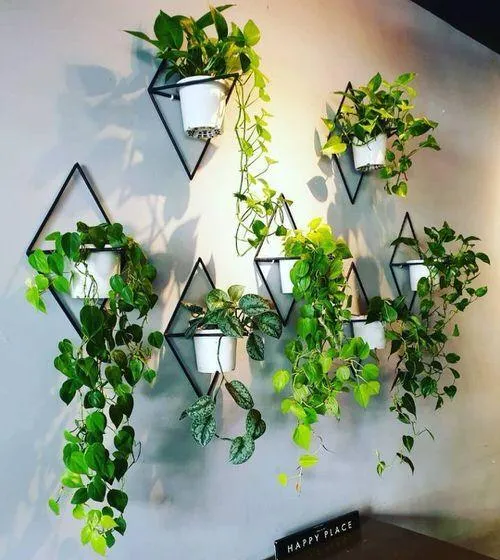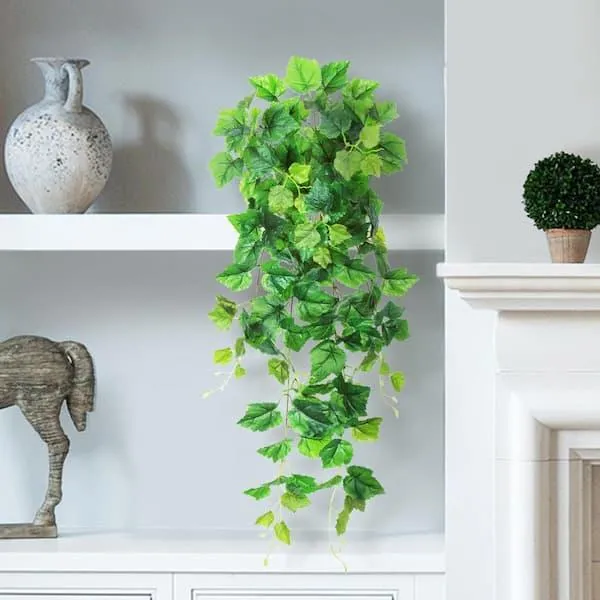A Complete Guide to Hanging Ivy Plants Indoor
If you’re looking to add some lush greenery to your indoor spaces but don’t have much floor space, hanging ivy plants are a perfect solution. With their ability to grow upwards and spill overContainer they make excellent hanging basket or hanging pot plants. In this comprehensive guide, I’ll answer all your questions about caring for hanging ivy plants indoors.
Choosing the Right Ivy Varieties
- English ivy (Hedera helix) – The most common type with dark green leaves. Very versatile and hardy.
- Swedish ivy (Plectranthus verticillatus) – bushy upright plant with fuzzy green and white leaves. Tolerates low light.
- Needlepoint ivy (Hedera helix ‘Needlepoint’) – miniature leaves that stay small. Great for tabletop displays.
- Algerian ivy (Hedera canariensis) – heart-shaped shiny dark leaves. More vining than others.
When choosing a variety, consider the light in your space and how quickly/densely you want it to grow. English ivy is a safe bet for most conditions.
Picking the Right Container
Any container with drainage holes will work as long as it’s the right size for your plant. Hang it from your ceiling, wall shelves, doorway, or anywhere vines can trail down. Make sure to use a strong hook or cable that can support the extra weight when mature. Best containers are hanging baskets, window boxes, mesh pots or attractive hanging planters.
Soil and Planting
Ivy thrives in well-draining potting mixes. Choose a blended soil or add perlite or bark to regular potting soil for better drainage. Fill your container 2/3 full and gently transplant your ivy. Firm soil around the roots and water well. As it grows, it may need repotting into a larger container every year or two.
Light and Water Requirements
Ivy can tolerate low light but will grow more vigorously in a bright spot. They prefer indirect sunlight from an east or west-facing window. Water when the top inch of soil is dry and use room temperature water. In winter, water less frequently when plant growth slows. Consistent moisture is key – under or overwatering can cause leaves to drop.

Fertilizing and Pruning
Feed monthly in spring and summer with a balanced houseplant fertilizer diluted to packet instructions. Snip off any stray vines that grow long without forming leaves as this diverts energy. You can prune ivy any time but spring is best for shaping. Remove any obviously sick or damaged growth to keep plants healthy.
Dealing with Pests and Diseases
From my experience, spider mites are the biggest pest problem for ivy. Check periodically for tiny webs or stippling on leaves. Isolate infected plants and spray with insecticidal soap. Mealybugs can also be an issue – wipe or dab individuals with rubbing alcohol on a cotton swab. Ivy is generally very sturdy but whitefly, scale or fungal leafspots can occasionally strike plants under stress. Maintain growing conditions and remove affected foliage.
Tips for Maximum Growth
Here are some tricks I’ve learned to help ivy flourish indoors:
- Mist leaves daily to increase humidity around plants.
- Feed monthly in spring/summer for lusher growth.
- Prune stray vines and shape plants regularly.
- Rotate container periodically for even growth.
- Expose to as much light as possible to encourage thick, cascading vines.
With proper care, one ivy plant can trail over the sides of an entire hanging basket within a year. It basically becomes a living curtain! Depending on conditions and variety, vines may reach 6 feet long or more as it climbs and spreads. Now that’s impressive for a houseplant.
Common Problems and Solutions
Leaf drop: Due to over/underwatering, temperature stress or low humidity. Check moisture level and improve conditions.

Sparse growth: Not enough light, fertilizer or root bound. Move to sunnier spot, feed monthly, repot up a size if needed.
Poor shape: May need pruning or support. Guide ivy onto trellis or stakes for neater look.
Pests: Treat with insecticidal soap/alcohol as outlined earlier. Isolate from other plants until infestation clear.
Diseases: Remove infected foliage right away. Consult expert if condition persists despite care. Improve ventilation.
So in summary, keep ivy in bright light, water when dry and prune as it grows! Kind of The basic routine produces stunning hanging baskets or draping vines. I hope these insights help you succeed with ivy indoors! Let me know if you have any other questions. Happy planting!

Care tips for indoor hanging ivy plants
| Plant type | Watering | Light needs | Fertilizing |
|---|---|---|---|
| English ivy | Allow soil to dry out between waterings. Water whenever top 1 inch of soil is dry. | Partial to full shade. Avoid direct sun. | Fertilize every 2-4 weeks during growing season. |
| Pothos | Water when top inch of soil is dry. Let soil dry out between waterings. | Medium to low light. Tolerates low light conditions. | Fertilize monthly during spring and summer. |
| Spider plant | Water when top inch of soil is dry. Allow soil to dry out between waterings. | Low to bright indirect light. Tolerates low light. | Fertilize monthly during spring and summer. |
| Philodendron | Water when top inch of soil feels dry. Let soil dry out between waterings. | Low to medium light. Tolerates low light and shade. | Fertilize every 4-6 weeks during spring and summer. |
| Tradescantia | Water when top inch of soil is dry. Allow soil to dry out slightly between waterings. | Medium to bright indirect light. Avoid direct sun. | Fertilize monthly during spring and summer. |
FAQ
-
What is the best way to grow ivy plants indoors?
basically, the tops choices for growing ivy indoors are English ivy (Hedera helix) and Swedish ivy (Plectranthus ciliatus). Both grow well in bright, indirect light and need to stay consistently moist but not soggy. English ivy can trail or climb, while Swedish ivy usually grows as a ground cover.
-
Do ivy plants need lots of sunlight?
Kinda, indirect sunlight is best. Too much direct sun might scorch the leaves, though English ivy can handle some direct morning or evening rays. aim for a spot with bright, diffused sunlight from an east or west window. Perhaps a south window is ok if it’s not in the direct path of the sun beams. On the other hand, plants won’t thrive without any light, so avoid dark corners.
-
How often should I water hanging ivy?
As a rule of thumb, you’ll want the soil to dry out somewhat between waterings, not stay constantly soggy. Strangely enough, soggy soil can damage the roots similar to letting them dry out too much. The ideal is lukewarm water when the top inch or two of potting mix is dry. Surprisingly, ivy is pretty forgiving and can bounce back from moderate thirst or dampness.
-
What type of soil do ivy plants prefer?
Most sources agree that ivy grows best in well-draining soil mixtures. Interestingly, ordinary potting soil mixed with small amounts of peat moss or perlite works well. The extra drainage aids prevent soggy conditions that roots dislike. You may also use a cactus/succulent potting mix if you have that on hand. Possibly coconut coir could sub for peat moss as a sustainable alternative. Go lightly on soil amendments like fertilizer until the plant is established.
-
How do I get my ivy to grow longer vines?
Strangely, allowing the vines to trail or hang freely encourages more growth. Try giving the vines something to climb or trail onto like a moss pole, trellis, or the side of a bookshelf. You can also lay long vines across the soil surface so the roots take hold as they grow. Possibly trim regularly to promote branching. In any case, adequate light, moisture and nutrients seem key to luscious growth.

-
Can I grow ivy from cuttings?
Luckily yes, ivy generally roots readily from stem or vine cuttings. Remove 3-6 inch cuttings from the parent plant, strip the bottom leaves, and dip the ends in rooting hormone if you have it. Basically just stick the cut ends about 1/3 deep into a loose, drainage-rich potting mix like perlite and peat. Spritz with water and keep the soil lightly moist. Within a few weeks or months, roots and vines should appear. Soon you’ll have new ivy plants!
-
How do I prevent ivy from dropping leaves?
main causes for dropped leaves are too much or too little water, too much or too little sunlight, or pests like spider mites. Check moisture levels, light exposure and closely inspect for critters. Try moving the plant to a sunnier or shadier spot as needed. Maybe check the soil drainage and replace if soggy. You can also wipe leaves with a damp paper towel to dispose of any mites. Surprisingly, a repotting may be in order if the roots appear crowded. With correct care, the ivy should stay lush!
